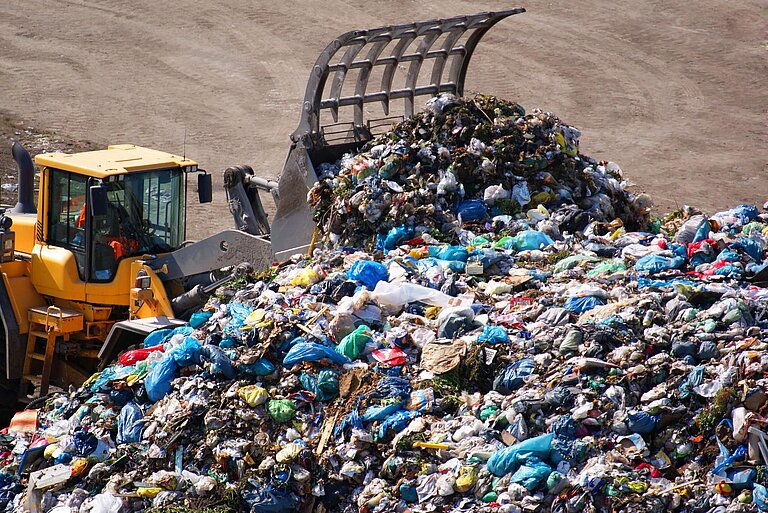Climate protection potentials in waste management

The study reveals the climate protection potentials of the waste management sector in the OECD including an outlook for the EU28 and a detailed analysis of the USA, as well as the newly-industrialised countries India and Egypt. The Life Cycle Assessment (LCA) method was used to characterise the respective status quo and to model two future scenarios for 2030 in comparison.
The methodology, the input data and assumptions were discussed with international experts at a method workshops in Berlin in June 2012. The goal of the debate was an improvement of comparability and transparency of LCA, thus strengthening their profile as a tool for decision support in politics and strategic planning. In consequence, the workshop resulted in harmonised emissions factors for material use applied in the study.
The country balances for the USA, India and Egypt are based on detailed country-specific research, whereas the OECD and EU28 balances are largely based on OECD and Eurostat data. The latter differ in quality and their verification and plausibility for all 34 OECD countries or all 28 EU member states was outside the scope of the study. Several data required for the balance were supplemented from national publications. However, in some cases, data gaps has to be filled with plausible assumptions. A higher degree of accuracy was achieved for the individual USA balance through the comprehensive analysis of publications of the US Environmental Protection Agency (EPA). There are some inaccuracies in the data set, yet these were identified and subject to dedicated sensitivity analyses. The data sets for India and Egypt were incomplete, as in many newly industrialised countries. Available data on arising waste and waste composition were in some instances highly inconsistent. It was attempted to use data sources that reflected waste management efforts in a comprehensive way wherever possible. Deviations in the data were modelled in sensitivity analyses. The input data and assumptions for India were discussed with local experts at a workshop organised by UBA, ifeu, GIZ and IGEP in New Delhi, India in November 2012.
The balances for the OECD member countries, the USA, India and Egypt illustrate net greenhouse gas (GHG) burdens as the status quo. The reason for these burdens are the waste deposition in landfills and associated methane emissions from the biological decomposition of organic waste components. The achieved benefit in the status quo through substitution and thus prevention of emissions was lower than the burdens from waste deposition. The same applies to individual OECD countries: in the case that waste deposition is rare or non-existent, net benefit is the consequence (e.g. Japan). These net benefits are more pronounced with increased material use and more efficient energy recovery. The results of the study were presented at a conference at the IFAT 2014.
The most important conclusion from the study identifies a significant potential for GHG reduction in the waste management sector. However, there is a need for more incentive to motivate newly-industrialised countries, but also some OECD and EU members, to establish an integrated circular economy. Within the EU, directives and regulations for the reduction of the deposition of biodegradable waste and the development of recycling efforts are essential measures defining the way forward. New concepts for newly-industrialised countries and developing countries should take care to promote the integration of the informal sector that achieves benefit effects through recycling alone in these countries.
The final results of the study were published in two articles in the journal “Müll und Abfall”. Part 1: OECD member countries, EU28 and focus USA in the edition 4/15, part 2: India and Egypt in the edition 6/15.
Runtime
October 2011 – April 2015
Client
Federal Environmental Agency
Partner
Ökoinstitut e.V. Institut für angewandte Ökologie
Info
Klimaschutzpotentiale der Abfallwirtschaft, publication by the Federal Environment Agnency 46/2015 (in German, pdf 6,4 MB)
Additional information may be found on the Federal Environmental Agency Homepage
